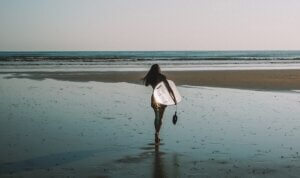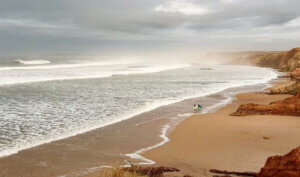Many people are wondering if it is even possible to learn to surf on your own. So, let me start this article by assuring you that it is absolutely possible to learn to surf without taking a single lesson. Plenty of people have done it, including my brother. To get you started on this journey of becoming a surfer, let me present the top 12 tips for how to learn surfing by yourself.
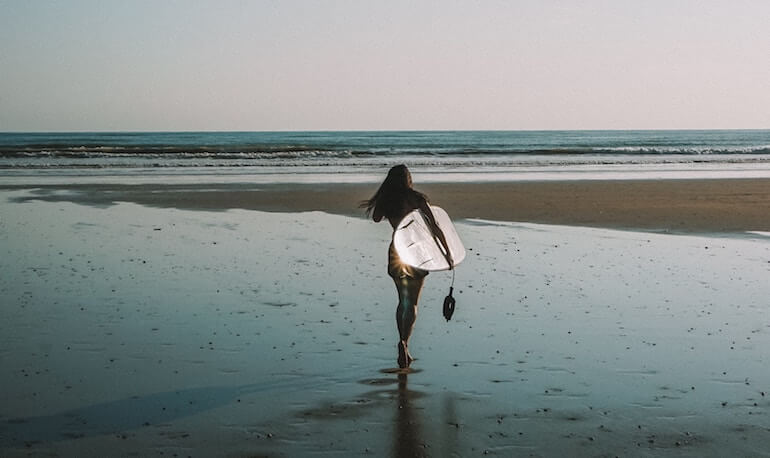
- 1 Is it a good idea to learn surfing by yourself?
- 2 Why taking a surf course is a good idea
- 3 1. Find the right surf break
- 4 2. Buy a soft top
- 5 3. Give yourself plenty of time
- 6 4. Choose the right spot
- 7 5. Time to hit the water
- 8 6. Practice being on your board
- 9 7. Learn everything about how to paddle
- 10 8. Become your own surf instructor
- 11 9. Realizing which mistakes you make
- 12 10. In the ocean you are always alone
- 13 11. Learn about surfing etiquette
- 14 12. Find a surfing partner
- 15 Final Thoughts on How to learn surfing by yourself
Is it a good idea to learn surfing by yourself?
That something can be done is not the same thing that you should be doing it. Let me explain why this applies to learning to surf.
The 4 elements of surfing you need to master
To be able to surf you will require basic knowledge in the following 4 areas:
1. How to lay on the board.
2. How to read the ocean to decide which wave you should try and catch.
3. How to paddle correctly.
4. How to do a pop-up.
That’s all, just master these steps and you will have taught yourself surfing.
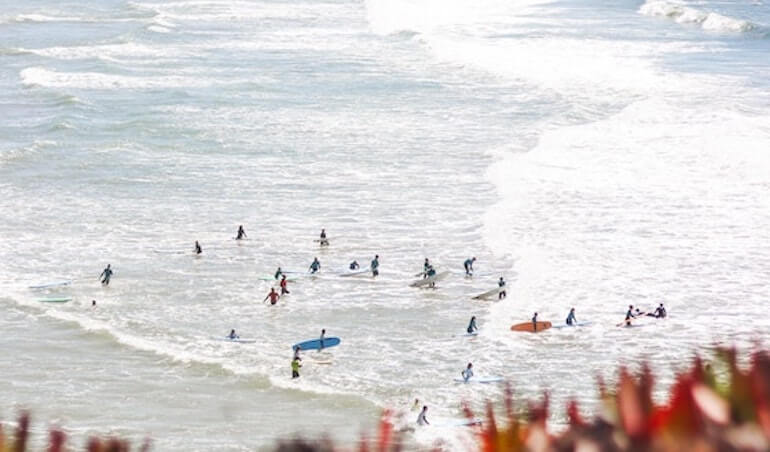
Why taking a surf course is a good idea
It’s not self-evident how to do these exact steps. There is a lot of room for error if you simply try to do them on your own.
Because of this, most people recommend taking a course when you want to become a surfer.
Consider a one-week course
When I first started my surf adventure, I went on a one-week surf course in Biarritz. The instructors assured us that we would learn all the basics. After this course, we would be ready to take on the ocean by ourselves.
This proved to be true, I never took another surf lesson.
What I want to say with this story is that you don’t need endless training with an instructor, one week of surf classes should be sufficient.
Still not interested?
Determined to make it happen on your own?
Let’s go.
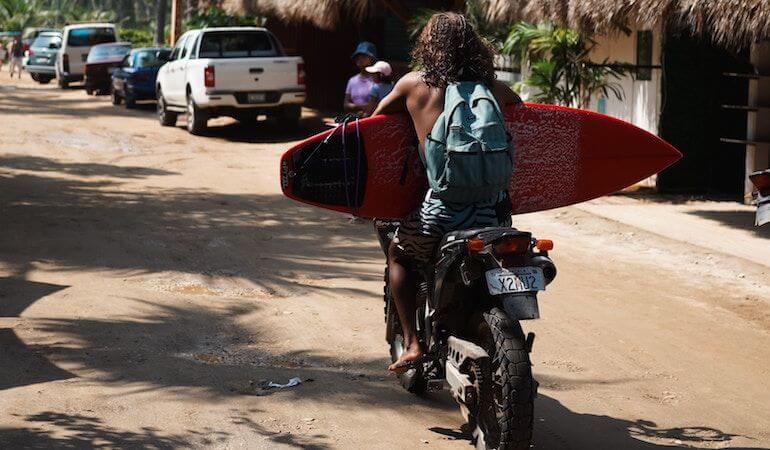
1. Find the right surf break
Not all surf breaks are suitable for people who are just learning to surf. The most crucial step when you want to learn to surf by yourself is choosing the right location.
Most beginners prefer a beach break; this means that the waves break on a sandy bottom. You will also need gentle, small and well-shaped waves.
Pick an off-the-beaten-path surf destination
Check out our article about the cheapest places to learn to surf around the world. Book a one-way ticket to one of those destinations. (Set aside a minimum of 2 months, but preferably 2 years.)
Congratulations, you are on your way to becoming a surfer.
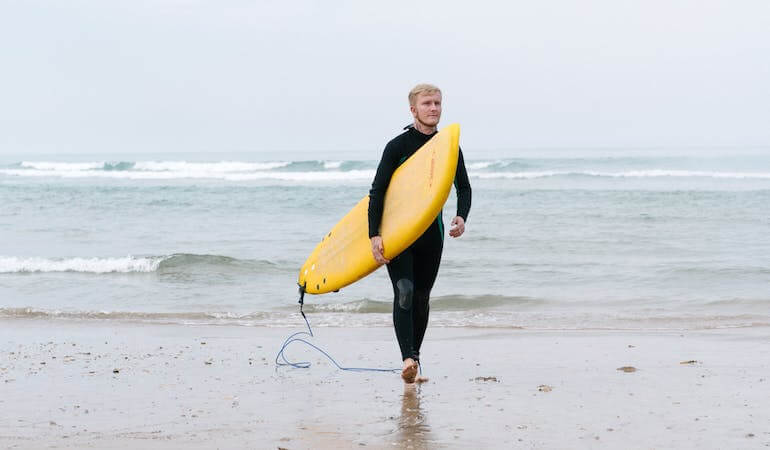
2. Buy a soft top
The second most important step is choosing the right board. Many people who want to learn to surf on their own pick a board that is far too small.
Check out my article, t understand why that’s a bad idea.
Nowadays people learn to surf on a soft top. A board 20 cm taller than you is a suitable size. The surface of the board is soft and foamie, thus the nickname of soft tops or foamies.
The general rule is the bigger the board, the easier it will be to catch waves and to keep your balance.
Since learning to surf will take a couple of months (at least) you will save money by buying a board for yourself. Renting is for quitters.
3. Give yourself plenty of time
Speaking of time, most people hugely underestimate the amount of time it takes to learn to surf. Perhaps they compare surfing with skiing or snowboarding.
But surfing is much trickier, you are dealing with a moving surface (the ocean.) Surfing also requires a high level of fitness.
A long road ahead
You need to learn how to read the waves, by doing this you will know where to place yourself and when to start paddling.
You also need to develop the muscles necessary for both the endurance you need when you paddle for a wave and the explosivity you need for the pop-up.
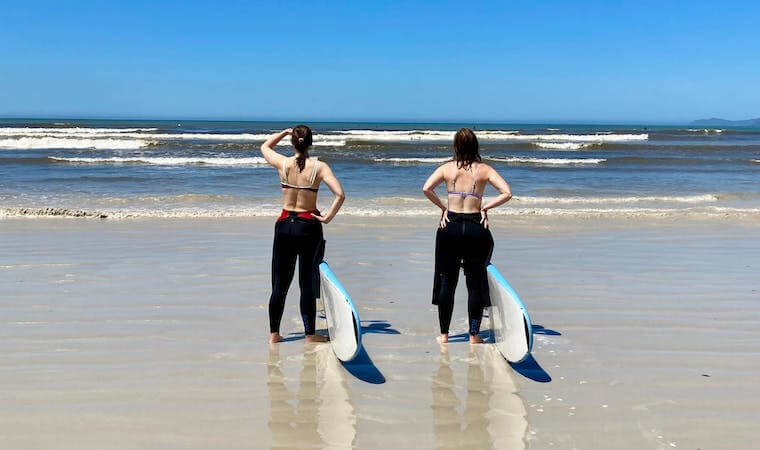
4. Choose the right spot
Becoming a surfer is all about having access to small gentle waves that crumble rather than being fast breaking. A good beach break suitable for beginners is your best bet for learning how to surf by yourself.
This might sound easy and straightforward, but what many beginner surfers don’t take into consideration is that the same beach can be heaven one day only to be dangerous the next day.
The same goes for the season, what might be a beginner paradise in July can be a death trap in November.
Understanding the swell forecast is important
You need to learn to read the swell forecast to pick the times that are most favorable. Talk with other surfers and soak up their wisdom. You can also talk with the guys at the rental places. (Yes, even if you don’t rent.)
If you ask nicely most dedicated surfers are happy to explain how a particular break works. Just catch them out of the water and buy them a beer or coffee.
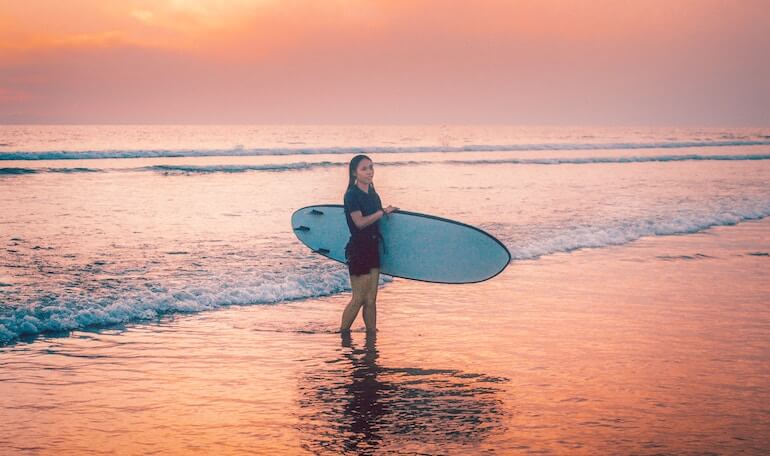
5. Time to hit the water
Every surfer-to-be starts in the white water.
This is the water rushing towards the shore after the wave has broken.
Being in the white water you have plenty of opportunity to practice your paddling skills, your pop-ups and your general balance.
The white water is where you sharpen your skills
The white water is not the real break and thus free of experienced surfers.
Regard it as your playground and training center. Count how many times you manage to catch the white water and jump up to a standing position. Try to break your own record from last time.
Longing for green waves?
I know it sucks to be paddling for white water. If you are eager to try real surfing, spend half your session in the white water and the other half trying to catch green unbroken waves together with the rest of the surfing crowd.
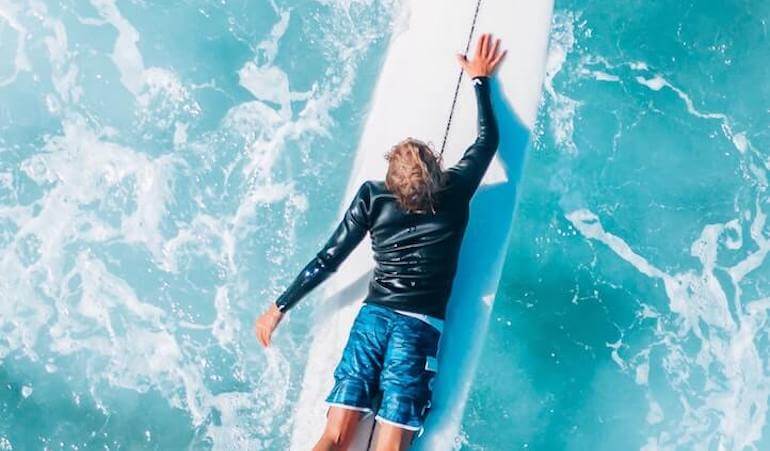
6. Practice being on your board
Many beginners lie either too far back or too far to the front on their board. I see this all the time in my local break.
The best tip is to ask a more experienced surfer to help you find the correct balanced positions.
You should not lie on the board as you lie in the coach, rather your whole body should be erect and tense. You should lift your chest and keep your legs together.
7. Learn everything about how to paddle
Paddling and becoming a good paddler are essential when you want to learn surfing by yourself.
It is your paddling that allows you to catch those beautiful unbroken waves. Paddle with long forceful stokes, your hand being cupped, trailing the edge of the board.
Paddle as your life depends on it
Start paddling when the wave is around 3 meters away from you.
Most beginners are not forceful enough when it comes to paddling. To be able to catch a wave you need to put your whole heart and all physical effort you are capable of, into your paddling.
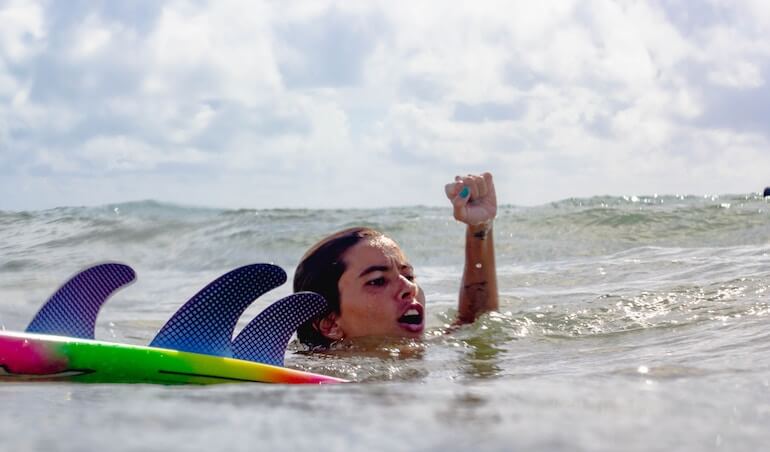
8. Become your own surf instructor
Accountability is one of the main reasons why people hire an instructor.
A personal trainer will push you to perform better. They will also tell you when you are doing things the right way.
When you are learning surfing on your own you have to be this source of inspiration for yourself. Don’t let yourself get away with being lazy.
Ideally, you want to surf every day when you are learning, you also want to stay in the water for around 2 hours.
Surfing two times a week is the absolute minimum to make progress.
Do try and push yourself as an instructor would.
9. Realizing which mistakes you make
When you have been surfing a few sessions, you want to get some kind of feedback. The best way to receive this, for free, is to ask your fellow surfers.
If you are humble in your approach, most people don’t mind giving you a few pointers.
Critique yourself
If you watch enough YouTube videos you will know what mistakes you make. Double down on fixing those.
Most people need to practice their pop-ups. Most people also don’t try to read the ocean as much as they should.
Those are two common mistakes.
A lot of beginners are also simply in the wrong spot. If you haven’t paddled for a wave in the last 10 minutes, you are in the wrong spot.
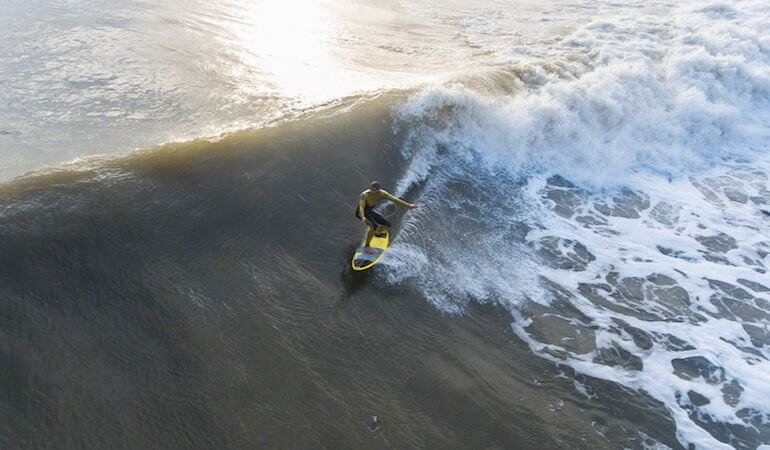
10. In the ocean you are always alone
It’s nice that you want to learn surfing by yourself. Many people take lots of surf lessons, but never become a surfer.
The reason behind this is that surfing is a bit of a lonely sport. It is you against the ocean; or on a good day; you are playing with the waves.
A wide variety of skills
Surfing requires a wide variety of skills, some of which you simply need to learn on your own.
You need to make the decision about which wave to paddle for. Only you can manage the jump up and smoothly glide through the face of the green wave.
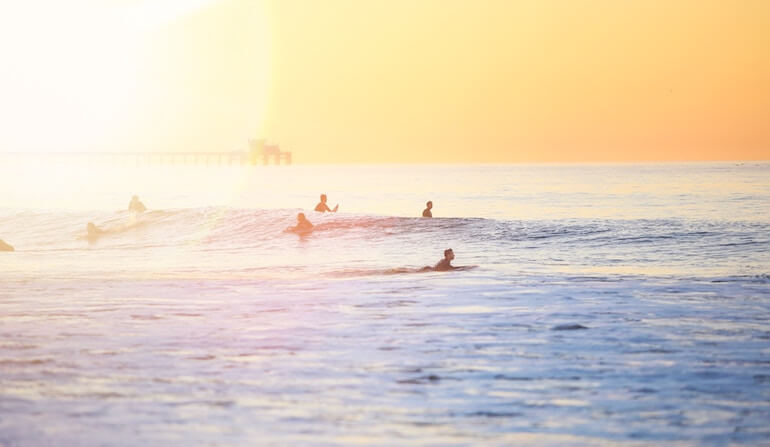
11. Learn about surfing etiquette
Another important aspect of becoming a surfer is to understand the rules of surfing.
It might look like any wave is up for grabs, or that you can just catch a wave despite a surfer already being on it.
Not so.
This sort of behavior might result in a haggard-looking surfer screaming at you.
Surfers are not chilled when it comes to “stolen waves” or beginners dropping in on their waves.
Give the right priority
The simple rule is that the surfer closest to where the wave is breaking has first priority.
If two or more surfers paddle for the same wave, you have to pull out and give the wave to the person who is next to the breaking point.
In surfer language “The surfer who does the deepest take-off gets the wave.”
Sit on the beach and watch the break to see how this is done.
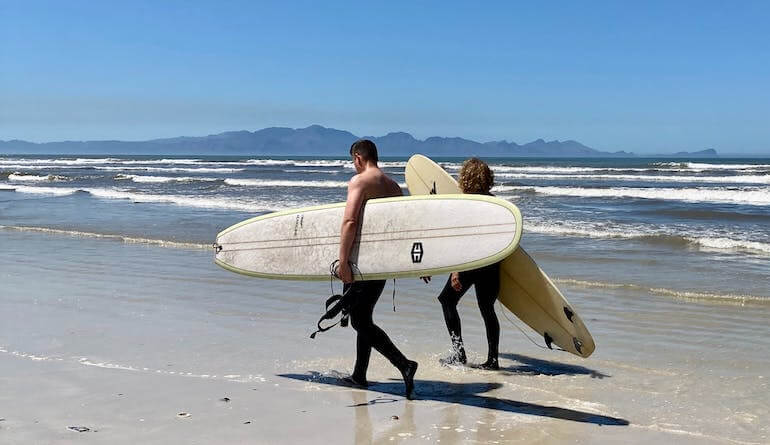
12. Find a surfing partner
I saved the best tips for last, you need to find surfing buddies. You will have fun and support each other in the water.
Foremost you will learn from other surfers, or surfer wannabes.
If you travel to a surf destination by yourself, do find other people who are on around the same level.
Since surfing is a bit tough and difficult, you need buddies to push you.
Final Thoughts on How to learn surfing by yourself
Surfing is amazing. You are immersed in nature, fully present and in sync with the waves that are rolling in. The first few weeks of surfing on your own will be hard, but they will also be incredible fun.
I still remember all my first sessions of surfing and so will you. Nothing is more thrilling than paddling out at a new break. Enjoy the process and you will become a surfer.



